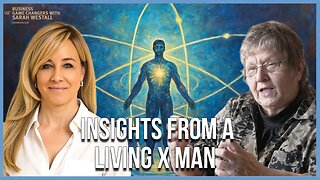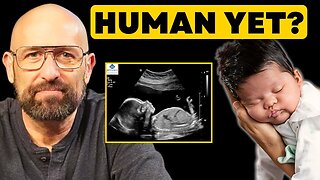Premium Only Content

The Cell Cycle
For Employees of hospitals, schools, universities and libraries: download up to 8 FREE medical animations from Nucleus by signing up for a free trial at: http://nmal.nucleusmedicalmedia.com/biology_youtube
SCIENCE ANIMATION TRANSCRIPT: In this lesson, we'll be looking at the cell cycle. This is the lifespan of a eukaryotic somatic cell. A somatic cell is any cell in the body of an organism, except for sex cells such as sperm and egg cells. The cell cycle describes the sequence of cell growth and division. A cell spends most of its life a state called interphase. Interphase has three phases, the G1, S, and G2 phases. Interphase is followed by cell division, which has one phase, the M phase. Together these four phases make up the entire cell cycle. G1 of interphase is sometimes called growth 1 or gap phase 1. In G1, a cell is busy growing and carrying out whatever function it's supposed to do. Note that some cells, such as muscle and nerve cells, exit the cell cycle after G1 because they do not divide again. A cell enters the S phase after it grows to the point where it's no longer able to function well and needs to divide. The S stands for synthesis, which means to make, because a copy of DNA is being made during this phase. Once DNA replication is complete, the cell enters the shortest and the last part of interphase called G2, also known as growth 2 or gap phase 2. Right now, it's enough to know that further preparations for cell division take place in the G2 phase. Now that interphase is over, the cell is ready for cell division, which happens in the M phase. The M phase has two events. The main one is mitosis, which is division of the cell's nucleus, followed by cytokinesis, a division of the cytoplasm. So, at the end of M phase, you have two daughter cells identical to each other and identical to the original cell. Let's review. The cell cycle describes the life cycle of an individual cell. It has four phases, three in interphase and one for cell division. Most cell growth and function happen during G1. The cell enters the S phase when it needs to divide. In this phase the cell replicates its DNA. Replication just means the cell makes a copy of its DNA. In G2, the cell undergoes further preparations for cell division. Finally, we have cell division in the M phase. The M phase consists of mitosis, which is nuclear division, and cytokinesis, or division of the cytoplasm. We'll explore the details of mitosis and cytokinesis separately. [music]
NSV15004
-
 LIVE
LIVE
Flyover Conservatives
21 hours agoWARNING! October 7th Unpacked and Exposed: What REALLY Happened?; GEN Z BACKS HAMAS?! - Hannah Faulkner | FOC Show
665 watching -
 LIVE
LIVE
Barry Cunningham
2 hours agoPRESIDENT TRUMP IS BRINGING THE RECKONING TO THE DEEP STATE!
7,117 watching -
 LIVE
LIVE
Drew Hernandez
1 hour agoCANDACE OWENS LEAKED CHARLIE KIRK MESSAGES CONFIRMED REAL & DEMS PUSH TO TRIGGER CIVIL WAR
824 watching -

Sarah Westall
3 hours agoSuperhuman Hearing of the Matrix: Reality is Different w/ Sharry Edwards
4.76K1 -
 LIVE
LIVE
LFA TV
1 day agoLIVE & BREAKING NEWS! | TUESDAY 10/7/25
526 watching -
 30:00
30:00
BEK TV
6 days agoGUT HEALTH AND THE POWER OF KIMCHI WITH KIM BRIGHT ON TRENT ON THE LOOS
106K9 -
 33:18
33:18
Stephen Gardner
1 hour ago🔥BOMBSHELL: Trump's NEW REPORT Catches Democrats Red-Handed!
7.24K5 -
 10:20
10:20
Ken LaCorte: Elephants in Rooms
7 hours ago $0.16 earnedWhen does a fetus become a baby?
3.21K4 -
 1:40:39
1:40:39
Glenn Greenwald
6 hours agoPam Bondi's Malicious Ineptitude on Full Display During Senate Hearing; Pro-Spying Senators Complain About Being Surveilled; What New Candace/Charlie Kirk Messages Reveal | SYSTEM UPDATE #528
104K94 -
 LIVE
LIVE
SpartakusLIVE
3 hours agoPREPARE to have your Frontal Lobe SEARED with MIND BENDING Content
187 watching
